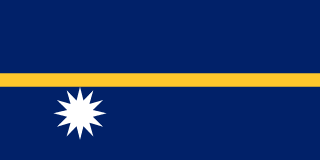Discover all the essential maritime information for Nauru, a Pacific island known for its port activities and navigation. This guide offers a detailed analysis of port infrastructures, navigation conditions, maritime safety, and economic opportunities related to the sea around Nauru. Whether you are a maritime professional, a logistician, or a navigation enthusiast, this guide will help you understand the maritime specifics of this small island nation, focusing on best practices and necessary precautions for navigating in this isolated region.

Explore the strategic ports and maritime infrastructure of nauru
Explore the strategic ports and maritime infrastructure of nauru
Nauru, a small Pacific island, has limited but strategic port infrastructures for its economy. The main commercial port of Nauru is located in Aiwo, on the west coast of the island. This port mainly serves the transshipment of phosphate, a major and historical resource of the island that has shaped the local economy for decades. Despite its modest size, the port can accommodate medium-sized vessels for importing and exporting goods essential to daily life and local industry. The facilities include docks and storage areas, but these infrastructures need improvements to meet growing demand and to incorporate modern environmental standards. The coastal topography is characterized by reef zones, which require cautious navigation and good local knowledge of depths and marine currents. Furthermore, Nauru does not have significant shipyards, meaning maritime maintenance largely depends on external services or makeshift facilities. Given its isolated location, the port is a vital hub for the supply of goods and fuels, and it is essential for the transport of travelers and cargo between Nauru and neighboring islands. Port management relies on local authorities who work in collaboration with international partners to optimize the efficiency and safety of maritime operations.
Navigation around Nauru presents specific characteristics due to its island geography and the Pacific marine environment. The island is surrounded by lagoons and coral reefs that limit the maneuvering areas of vessels, requiring strict mastery of routes to avoid groundings. Typical weather conditions include prevailing winds and a moderately intense cyclone season, which calls for increased vigilance during certain times of the year. Specific nautical charts indicate risk zones as well as preferred routes for commercial, tourist, and fishing vessels. In terms of maritime safety, Nauru adheres to international conventions, although emergency response capacity is limited due to its remoteness and limited infrastructures. Protocols are in place to protect the marine environment, notably to prevent pollution from hydrocarbons and waste. The local maritime council coordinates sea rescue activities in partnership with regional organizations. Artisanal fishing plays a key role in the island economy, and sustainable management of maritime resources is a priority to ensure the longevity of ecosystems and livelihoods. For navigators and shipowners, it is recommended to have updated information from Nauru maritime authorities before any sea operation.